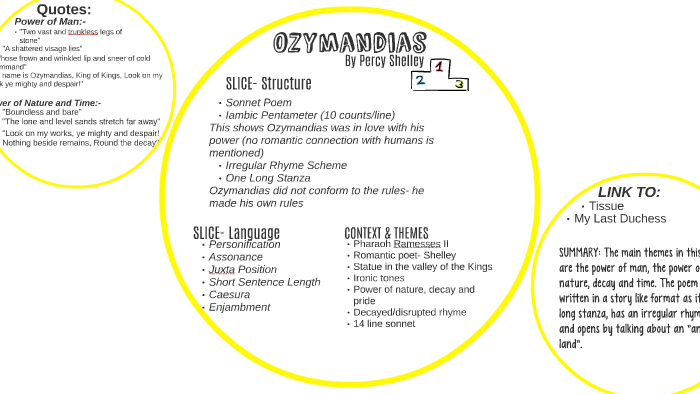

(Smith's poem was published in the same paper several weeks later).

Shelley's poem was published under the pen name "Glirastes" on January 11, 1818, in the weekly paper The Examiner. If any want to know how great I am and where I lie, let him outdo me in my work." Diodorus is the "traveler from an antique land" Shelley refers to in the poem's opening line. In his Bibliotheca historica, Diodorus states that the following phrase was inscribed at the base of a statue of Ramesses II: "King of Kings Ozymandias am I. In writing his poem, Shelley was highly influenced by ancient Greek writings on Egypt, particularly those of a historian named Diodorus Siculus. Ancient Egypt in general was also very much in vogue among the British upper classes, and many of Shelley's contemporaries took a great interest in the period and any new archaeological discoveries in Egypt. This may have been the inspiration behind the theme of the competition. Earlier in 1817, it was announced that archaeologists had discovered the remains of a statue of Ramesses II and were sending the fragments to the British Museum.

The Shelleys moved in literary circles, and they and their friends would often challenge each other to writing competitions, so this wasn't anything out of the ordinary.įor this competition, Shelley and Smith wrote about the Egyptian pharaoh Ramesses II ("Ozymandias" is the Greek name for Ramesses II). During this time, Percy Shelley and Smith challenged each other to a poetry competition. The poet Horace Smith spent the end of 1817 with Percy Shelley and his wife Mary Shelley (the author of Frankenstein). There are actually two Ozymandias poems, and they were written as part of a friendly writing competition.


 0 kommentar(er)
0 kommentar(er)
